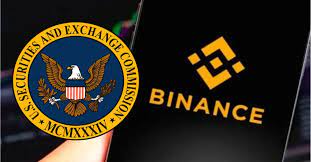Getting started with blockchain | 10 common misconceptions about blockchain and cryptocurrency
Source|Medium
Translation|First Class (First.VIP)
This article is aimed at newcomers to the currency circle and talk about 10 common misconceptions about blockchain and cryptocurrency.

- Do not blow black, a quick overview of the 2019 cryptocurrency 10 development trend
- Last year’s battle, this year’s cold and clear, BCH upgraded this year?
- QKL123 Quote Analysis | Libra will replace Ethereum? Unable to help themselves! (1114)
Misunderstanding 1 Blockchain requires cryptocurrency to work.
Most cryptocurrencies rely on blockchain technology, but blockchains can also work without cryptocurrencies. Encrypted currency is an application of blockchain technology.
(First class note: China encourages the combination of blockchain technology and industrial innovation, but it does not mean encouraging the disorderly development of virtual currency, but to realize the blockchain technology without currency.)
Misunderstanding 2 Transactions recorded on the blockchain are not tamperable.
The blockchain is designed to be resistant to review and security. The transparency of the blockchain makes the network easy to track, but it is extremely difficult to ensure the security of the blockchain without communicating with each other. Some blockchains may be vulnerable to 51% attacks.
Misunderstanding 3 Blockchain technology is only applicable to decentralized public distributed data.
Fact: Blockchains can be public (public), private (private) or even hybrid (chain). Not all blockchains are completely decentralized, and companies and organizations can have their own relatively centralized blockchain network for internal specific uses.
Misunderstanding 4 Distributed ledger technology (DLT) is the same as blockchain technology.
Fact: Blockchain technology is a subcategory of DLT. There are several different categories under distributed ledger technology, and blockchain is one of them.
(First Class Note: Distributed Book Technology, or DLT for short. refers to a way of data recording that does not need to be stored or confirmed by any centralized subject. The most prominent feature of distributed ledgers is that they are not maintained by any single institution or individual. Instead, it is built and recorded separately by each node in the network. Distributed accounting is often used in the financial and government sectors.
Blockchain technology is a form of distributed ledger technology. It is a non-tamperable ledger based on a formula algorithm in a decentralized network. By encrypting digital signatures (Cryptographic Signing) and linking the records together with "books", a chain is formed, which is the difference between blockchain and distributed ledger technology. )
Misunderstanding 5 Every industry can benefit from using blockchain technology.
Fact: While many industries can transfer and store data into a secure blockchain and benefit from it, and increase the operational efficiency of many businesses and achieve accountability. But not every industry can make significant improvements from the blockchain, and not every use case is suitable for blockchain technology. For example, in the Internet of Things, if you only need to automate the Internet of Things, there is no need to use a blockchain, you can use a trusted party instead.
Misunderstanding 6 Blockchain eliminates the middle side.
Fact: Not always. Although in some cases, in the case of point-to-point digital currency transactions/transfers, blockchains can eliminate traditional intermediates, in other industries, even if blockchains are utilized, intermediaries are still needed. For example, in logistics, the auto-enforced smart contracts that operate under the blockchain still rely on the external support of the intermediary to function.
Misunderstanding 7 Blockchain is the only point-to-point distributed ledger technology solution.
Fact: There are other similar technologies under development that use decentralized P2P distributed ledger technology to achieve similar end goals. An example is IOTA, which uses Tangle instead of a blockchain for point-to-point DLT.
Misunderstanding 8 Deploying smart contracts requires tokens.
Fact: Smart contracts require only a blockchain network to deploy and self-execute. Some blockchain networks charge transaction fees in tokens to deploy smart contracts, but not all smart contracts require a fee.
Misunderstanding 9 The cryptocurrency cannot be tracked.
Fact: Most cryptocurrencies run on the public chain, and anyone with an Internet connection can access transaction data at any time. Essentially, this means that you can easily track most cryptocurrencies using the blockchain browser, as well as index transaction data and wallet addresses. But anonymous coins are almost impossible to track in most cases.
Misunderstanding 10 All cryptocurrencies are scarce.
Fact: Not always. Some cryptocurrencies (such as Bitcoin) have a maximum circulation of 21 million bitcoins, while other cryptocurrencies (such as Ethereum) have no maximum circulation. The supply of certain cryptocurrencies may become increasingly scarce, while the supply of other cryptocurrencies may increase due to different issuance mechanisms, leading to inflation.
We will continue to update Blocking; if you have any questions or suggestions, please contact us!
Was this article helpful?
93 out of 132 found this helpful
Related articles
- Speed | Cryptographic Currency Derivatives Exchange: Clearing Mechanism; Bitcoin and "Great Wealth Transfer"
- Ten facts that Bitcoin does not know most people
- Babbitt column | Cold thinking of the central bank's digital currency
- Switzerland promotes cryptocurrency payments, 65,000 merchants will accept bitcoin
- Jianan Road Show PPT Exposure: The release range is 9 to 11 US dollars, and it is planned to be listed in the US next week.
- Half-monthly article: What is the blockchain of the Central Political Bureau collective learning?
- Decentralized Identity (DID) Research Report: An Important Practice for Web 3.0 Development





